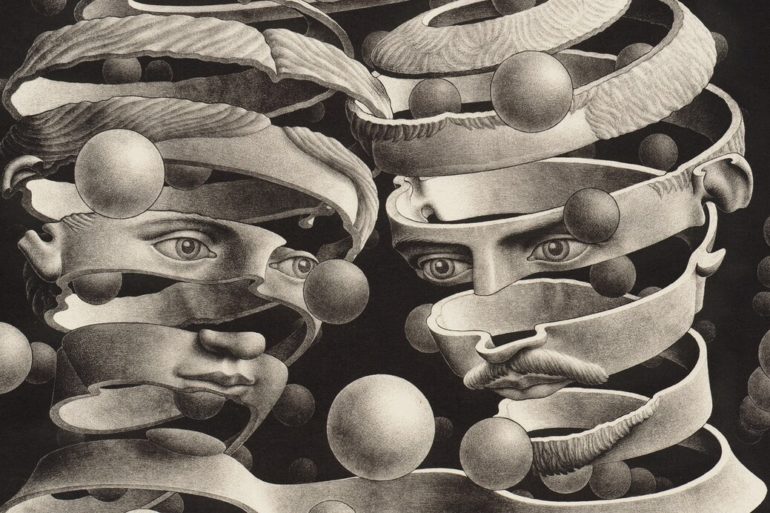What is a Paradox? Explanation with Examples
You’ve probably heard of the term “paradox.” But what exactly does it mean? Simply put, a paradox is a statement that seems to contradict itself. However, upon closer inspection, the statement contains a hidden truth. In this article, we’ll take a look at understanding paradoxes and explore what is a paradox in detail. By understanding Paradoxes, you can add an extra layer of depth to your writing. Let’s get started!
- Introducing the concept of paradox
- The fundamentals of a paradox
- Difference between a logical paradox and a literary paradox
- What are the concepts similar to a paradox?
- Paradox and Antithesis
- Paradox and Oxymoron
- Examples of paradox
- How paradox can be used to create a more complex and interesting story arc
- How to effectively use paradox in your writing
Introducing the concept of paradox
While paradox is self-contradictory, it is often used in literature to reveal a truth that is hidden or contradictory. To understand a paradox, it is important to look at the context and what the author is trying to achieve. For example, if an author writes “I can’t go on living without you,” they might mean that they cannot survive without the person they love.
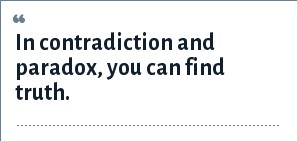
However, the literal interpretation of the statement would be that the person cannot physically go on living, which of course is not true. In this case, the paradoxical statement is used to emphasize the speaker’s emotional state. To understand a paradox, it is therefore important to consider what the author’s intention might be.
The fundamentals of a paradox
A paradox is a figure of speech that is inherently self-contradictory. It is often used to make a point or to create an interesting situation. The word “paradox” comes from the Greek “paradoxa,” meaning “contrary to expectation.” A paradox is often used in literature to create an intriguing plot.
For example, in the story “The Gift of the Magi,” a young couple sells their most prized possessions to buy each other Christmas gifts, only to discover that their gifts are now useless to them. The paradox creates a sense of irony and suspense that keeps the reader engaged. The paradox can also be used for comedic effects.
Concepts inherent in a paradox
There are three fundamental concepts inherent in a paradox: contradiction, ambiguity, and irony.
A contradiction is when two ideas are opposed to each other, such as when a character says one thing but does another.
Ambiguity is when there is more than one interpretation of a statement, and the irony is when what is said is the opposite of what is meant. All of these concepts can be used to create an effective paradox.
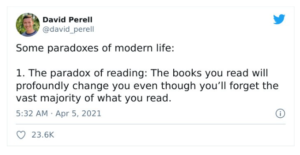
A powerful tool available to writers
Contradiction, ambiguity, and irony are all powerful tools that writers can use to create an impactful paradox as we know paradoxes are self-contradictory. By understanding these concepts, writers can use paradoxes effectively in their writing to challenge readers and provoke thought.
Difference between a logical paradox and a literary paradox
A logical paradox contradicts itself. For example, the statement “I always lie” is a logical paradox because if it is true, then it is false, and if it is false, then it is true. Logical paradoxes can be used to create problems in mathematics and philosophy. These are paradoxes where there is an inherent scope for resolution.
A literary paradox is a type of figure of speech that uses contradictory statements to make a point. For example, the statement “less is more” is a literary paradox because it uses two contradictory ideas (less and more) to make a point about simplicity. Literary paradoxes are often used for emphasis or to create an impactful statement.
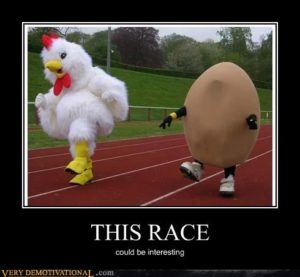
The different purposes of logical and literary paradox
While both logical and literary paradoxes use contradictory statements, they have different purposes. Logical paradoxes are designed to create problems or inconsistencies, while literary paradoxes are often used for emphasis or impact
What are the concepts similar to a paradox?
The paradox seems to contradict itself but contains a deeper truth. Paradoxes are often used in literature to create an impact or to challenge the reader’s way of thinking. There are several similar concepts to paradox, including antithesis and oxymoron.
An antithesis is a statement that contradicts itself. However, unlike a paradox, an antithesis does not contain a deeper truth. It is simply two opposing ideas placed side by side for effect. An oxymoron is a figure of speech that combines two contradictory terms. For example, “jumbo shrimp” or “deafening silence.” Oxymorons tend to be used for comedic or poetic effects and often sound more like an exaggeration than a contradiction.
What exactly sets the paradox apart?
While all three of these concepts involve contradictions, what sets paradox apart is the deeper truth that lies beneath the surface contradiction. It challenges the reader to think beyond what is being said on the surface and to find the hidden meaning.
In this way, paradoxes can be both puzzling and enlightening, making them an effective tool for writers who want to create an impactful literary work.
Paradox and Antithesis
An antithesis is a statement that is the opposite of another statement. For example, the statements “I am not what I am” and “I am what I am not” are antitheses of each other. The first statement means that I am not what people think I am, while the second statement means that I am exactly what people think I am not.
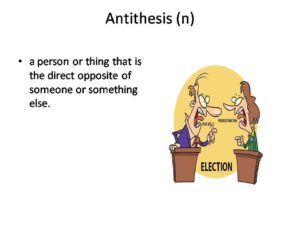
So what’s the difference between a paradox and an antithesis? While paradox contains some truth, an antithesis is a statement that is the opposite of another statement.
Paradox and Oxymoron
An oxymoron is a figure of speech that combines two contradictory terms.
An oxymoron doesn’t have to be true. It’s just a figure of speech used for dramatic effect or to make a point. For example, you might say “I’m so hungry I could eat a horse.” You don’t mean that you’re going to sit down and have a plate full of fried horse meat with some sides.

So, to sum it up: A paradox is a true statement that contradicts itself and an oxymoron is two words (or terms) that contradict each other but are often used together for effect.
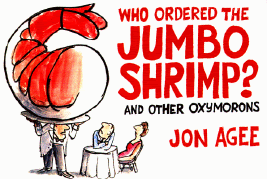
Examples of paradox
A widely known example of paradox comes from Joseph Heller’s novel Catch-22.
Joseph Heller and Paradox:
The novel Catch-22 is set during World War II and follows the character Yossarian, who is a bomber pilot. Yossarian is trying to survive the war and wants to be sent home.
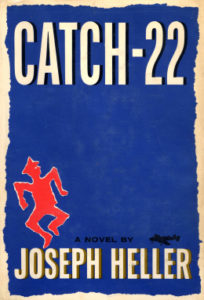
However, the military has a rule known as Catch-22, which states that a pilot can be sent home if they are mentally unfit for combat. However, to be considered mentally unfit for combat, a pilot must request to be sent home. But requesting to be sent home is an indication that the pilot is fit for combat.
Therefore, Catch-22 states that a pilot can never be sent home. This paradoxical rule creates an absurd situation in which Yossarian can never escape the war.
John Donne and Paradox
Renowned poet John Donne is known for his use of paradox, and nowhere is this more evident than in his poem “Death, thou shalt not die.” In this poem, Donne boldly proclaims that death shall not triumph over life, even though death is an inevitable part of life. This use of paradox creates a powerful effect, driving home the message that life is stronger than death. By using paradox, Donne forces the reader to stop and think about the meaning of his words, creating a more impactful and memorable poem.
William Shakespeare and Paradox
Another renowned example of the use of paradox can be found in the work of William Shakespeare. In the play Julius Caesar, for example, Shakespeare uses a paradox to convey the idea that “the evil that men do lives after them, but the good is oft interred with their bones.” In other words, even though people may try to do good deeds, they will ultimately be forgotten, while their bad deeds will live on. By using a paradox, Shakespeare makes his point more effectively and engages his audience more deeply.
These are a few examples of paradoxes from known works of literature. Each example shows how paradoxes can create an absurd or humorous situation.
In all cases, Paradoxes add intrigue and depth to literature by forcing characters and readers to think about concepts in new and different ways.
How paradox can be used to create a more complex and interesting story arc
As a literary device, the paradox can be extremely effective in creating a more complex and interesting story arc. In its simplest form, a paradox contradicts itself. However, upon further examination, the paradoxical statement reveals a deeper truth. For writers, using paradoxes can be an excellent way to challenge readers and add layers of depth to their stories.
Effective use of Paradox in Literature
One of the most exciting uses of paradox in literature is found in William Golding’s Lord of the Flies. In the novel, a group of boys are stranded on a desert island and must fend for themselves. As they attempt to establish a society, things quickly degenerate into savagery. One of the key lines in the book is when Simon tells the other boys “Maybe there is a beast… maybe it’s only us.” On the surface, this appears to be a contradiction. However, upon closer examination, it’s a deeply insightful statement about human nature. By using this paradox, Golding forces readers to question their assumptions about human nature and society.
In your writing, you can use paradoxes to create similar effects. So don’t be afraid to experiment with paradoxes in your writing – you might just find that they take your story to new and exciting places.
How to effectively use paradox in your writing
Paradoxes can be a powerful tool for writers. By their very nature, paradoxes force readers to question their assumptions and think about things in new ways. In the hands of a skilled writer, paradoxes can enhance characterization, add tension to a plot, and even deepen the themes of a story.
Tips on using paradox in your writing
So how can you effectively use paradoxes in your writing? Here are a few tips:
Use paradoxes sparingly. A single paradox can have a great impact, but using too many paradoxes can be overwhelming.
Choose your paradoxes. Make sure they enhance your story rather than detract from it.
– A paradox that is unrelated to the plot or theme of your story will likely just confuse readers.
– A paradox that is too convoluted or difficult to understand will likely just frustrate readers. The key is to strike a balance between being challenging and being understandable.
Use paradoxes to create tension. Paradoxes can add an element of suspense or conflict to your story by forcing characters (and readers) to grapple with opposing ideas or contradictory information.
– For example, you could use paradoxes to create tension between two characters by having them hold opposing beliefs about a major plot point.
– Alternatively, you could use paradoxes to introduce an unexpected twist in the story, such as revealing that a character is an opposite of what they seem.
In conclusion, paradoxes are formidable tools in writing that offer you more scope for creativity and enhance your storytelling. Understanding the fundamentals of a paradox and knowing how to employ it are sure to fascinate your readers. When you look at the source of paradoxes, you realize our lives are rife with them. Look no further, start to explore paradoxes in your compelling narratives.

